San Gallo, new traces of ancient relations
Via San Gallo and Piazza della Libertà are currently occupied by numerous construction sites, signs of building renovation and urban development. The imposing scaffolding of the restoration site of the Arco di Trionfo dei Lorena becomes the stage on which to break down and at the same time conceptually walk along Via San Gallo through its identity-forming elements.
With an approach focusing on urban analysis and communication design, the themes of tangible and intangible heritage, cultural imagery and popular traditions, symbolic scenarios and identity signs, and the interpretation of the city as a scenic space have all been addressed.
Project
The present-day Via San Gallo, which has run since antiquity near the Mugnone stream, is the northward continuation of the cardo maximus of the Roman Florentia, in the direction of Bologna.
From the twelfth century onwards, the expansion of the city took place outside the walls along this main thoroughfare, where religious orders and lay associations built monasteries, churches, oratories, confraternity and congregational headquarters, dispensaries and hospices in place of agricultural and wooded areas such as the so-called Campus Regis and Cafaggio. These were largely closed down over time and put to other uses (mostly barracks and schools) but they still unmistakably characterise the road today.
At the beginning of the thirteenth century, a hospital and monastery dedicated to St. Gall were built, around which a village developed, later demolished out of military necessity during the siege of 1529-1530. Both the street and the gate of the last circle of city walls, built in 1284-1285 and isolated with the demolition of the walls during the urban renewal works carried out for the transfer of the capital of the Kingdom of Italy to Florence (1865-1871), take their name from this complex.
Opposite the gate stands the Triumphal Arch of the House of Lorraine, erected to welcome the new Grand Duke of Tuscany, Francis Stephen of Lorraine, to the city in 1739. Today, it provides the stage for the project Firenze Forma Continua / San Gallo, new traces of ancient relations.
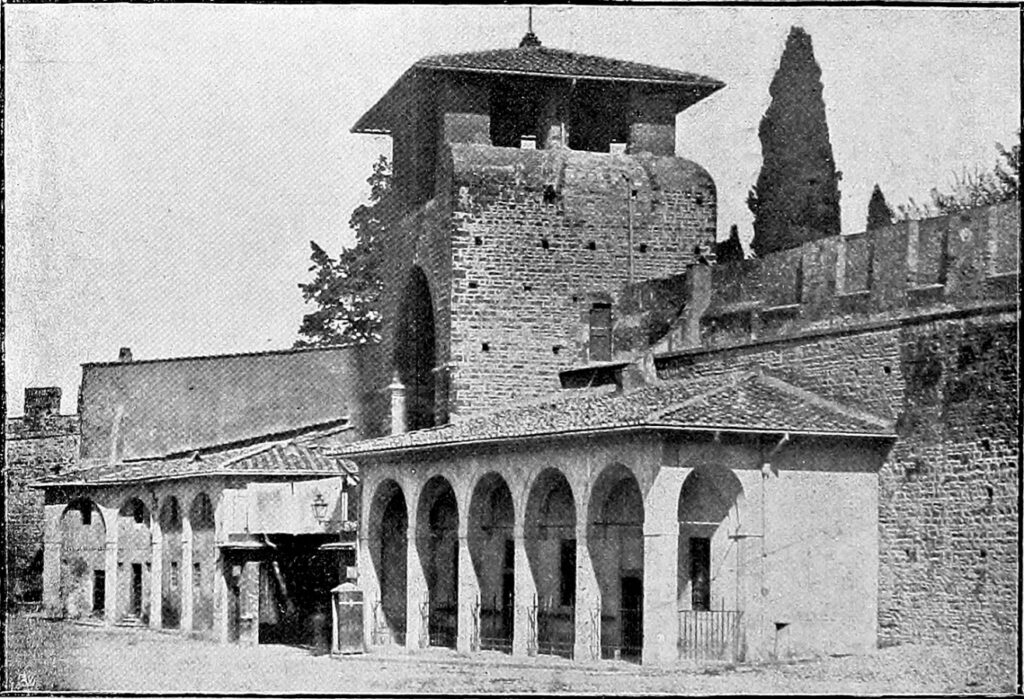
Cento vedute di Firenze antica, Florence, Fratelli Alinari, Uffizi Topographical Collection, 1906
Seminar
Themes and objectives
The workshop Firenze Forma Continua_Scenografie Urbane intends to recount and promote the cultural and urban stratifications on different thematic levels, offering a fresh perception of them and highlighting the value of cultural heritage through its identification, study, interpretation, protection, conservation, in order to create a community that is aware of, attentive and willing to know and enjoy its own identity and to disseminate heritage values.
The activity will focus on the identity and evolution of Porta San Gallo and Via San Gallo, a route that has maintained a significant role during all phases of the city’s expansion, still recognisable in the urban fabric.
The themes of tangible and intangible heritage, cultural imagery and popular traditions, symbolic scenarios and identity signs, and the interpretation of the city as a scenic space will all be addressed.
Through processes of acquisition of knowledge and transmission of heritage, addressed with an approach oriented towards urban analysis and communication design, the result provides for the conception and development of projects, with a view to the installation planned for June 2023 on the occasion of the annual opening of the system of Gates, Towers and Fortresses.
Programme
The programme includes multi-disciplinary talks by lecturers and the involvement in various capacities of associations and cooperatives able to offer further insights into the workshop project. During the week, lectures and group projects will alternate, with the aim of bringing together theoretical knowledge and concrete project applications in an intensive manner.
Team
Head lecturer: Gianluca Belli
Other lecturers and collaborators: Carlo Francini, Vanessa Staccioli, Alice Trematerra, Gaia Vannucci
Period of implementation 17-21 April 2023
The workshop is organised by the HeRe Lab – Heritage Research Lab with the Department of Architecture of the University of Florence and the Florence World Heritage and UNESCO Office of the Municipality of Florence – and the DIDAcommunicationLab. The following have been involved in various capacities: Associazione Mus.e Firenze, Associazione fund4art; MARE Laboratorio di Innovazione Sociale.
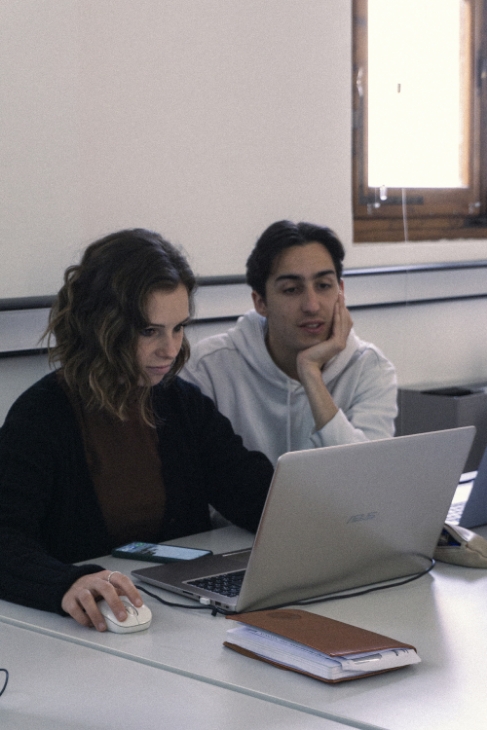


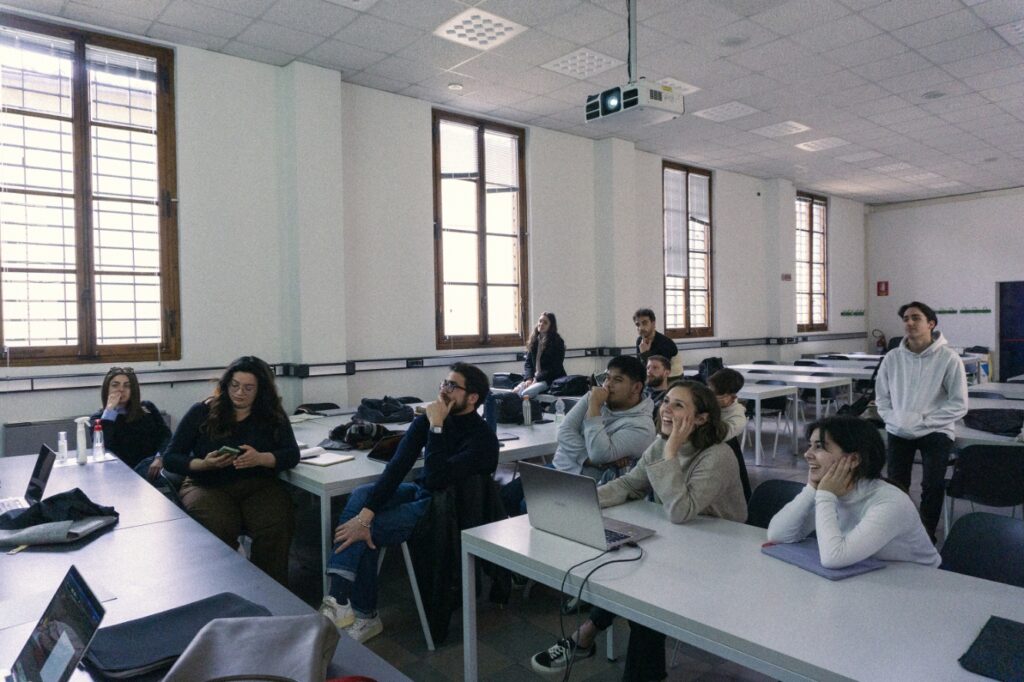
Interviews
Cooperativa MARE has interviewed the participants in the Firenze Forma Continua_Urban Settings workshop, Florentine and non-Florentine citizens and students, to investigate their memories of Via San Gallo and Porta San Gallo.
The Firenze Forma Continua project recognises the foundations of the 2005 Faro Convention (Council of Europe Framework Convention on the Value of Cultural Heritage for Society, ratified by Italy on 23 September 2020) which promotes the right of citizens, and the entire community, to know and enjoy their cultural heritage defined as “a group of resources inherited from the past which people identify […] as a reflection and expression of their constantly evolving values, beliefs, knowledge and traditions. It includes all aspects of the environment resulting from the interaction between people and places through time.” In particular, signatories are asked to commit themselves to “enhance the value of the cultural heritage through its identification, study, interpretation, protection, conservation and presentation.”
Conscientious management of cultural heritage thus implies the involvement of each individual and the entire community; the attribution of value to cultural resources, their preservation and transmission to future generations are the responsibility of both state communities and civil society.
The aim of the project is to disseminate the history of the city of Florence and the Florentine territory, reconnecting it to the entire system of cultural enhancement, involving citizens, city users, students and visitors, creating, or recreating, connections between territory, people and heritage to form real ‘heritage communities’.
Installation
The installation is a visual narrative that, through an abstract alphabet of symbols, gives renewed perception to the individual parts, to the relationships between them and the link between Via San Gallo and its Gate. Now deprived of its function and sometimes forgotten, Porta San Gallo contributes to the Outstanding Universal Value of the UNESCO World Heritage Site Historic Centre of Florence.

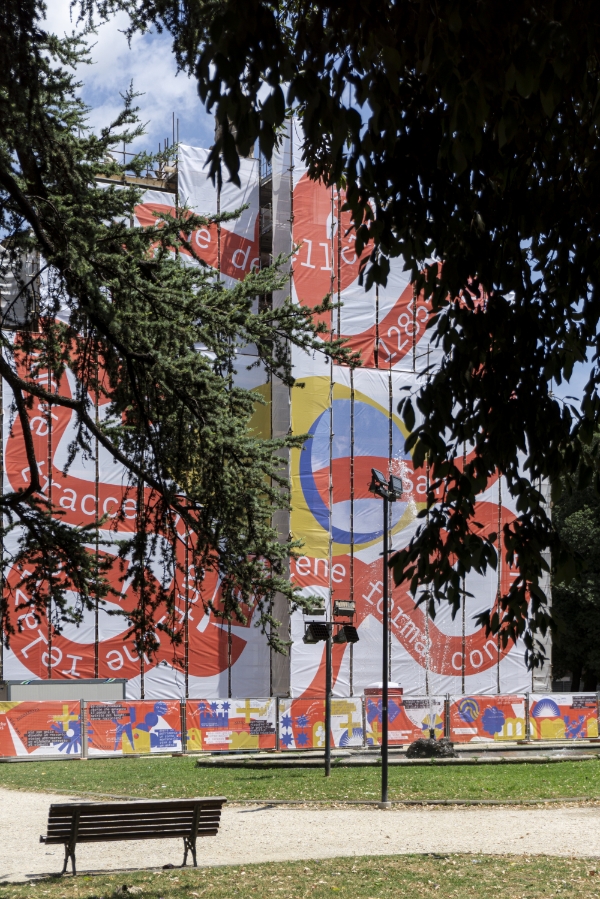

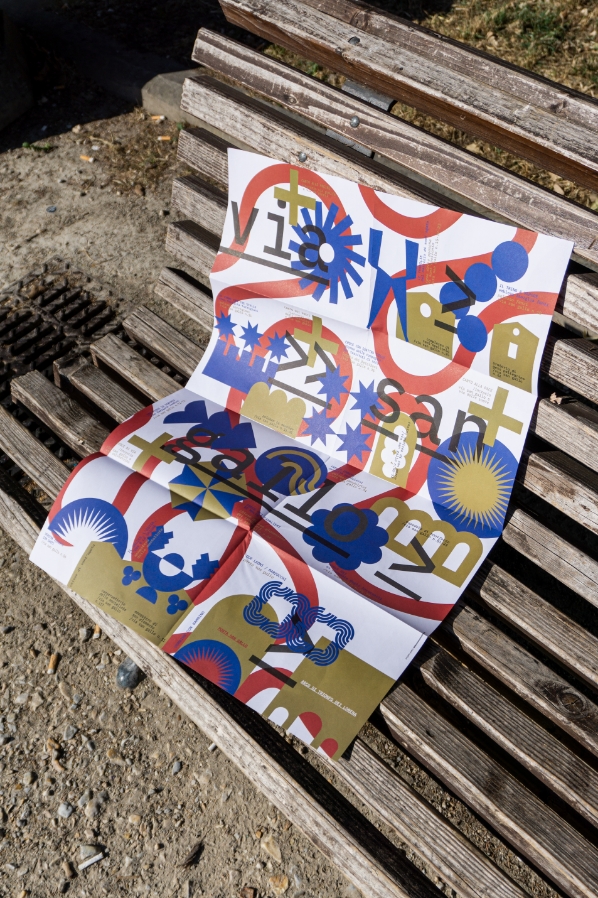


Itinerary
The 2023 pedestrian route offers a conceptual walk along Via San Gallo through its identity-forming symbols, from the Canto alle Macine to the Triumphal Arch of the Lorraine, passing through Porta San Gallo.
The present-day Via San Gallo, which has run since antiquity near the Mugnone stream, is the northward continuation of the cardo maximus of the Roman Florentia, in the direction of Bologna.
From the twelfth century onwards, the expansion of the city took place outside the walls along this main thoroughfare, where religious orders and lay associations built monasteries, churches, oratories, confraternity and congregational headquarters, dispensaries and hospices in place of agricultural and wooded areas such as the so-called Campus Regis and Cafaggio. These were largely closed down over time and put to other uses (mostly barracks and schools) but they still unmistakably characterise the road today.
At the beginning of the thirteenth century, a hospital and monastery dedicated to St. Gall were built, around which a village developed, later demolished out of military necessity during the siege of 1529-1530. Both the street and the gate of the last circle of city walls, built in 1284-1285 and isolated with the demolition of the walls during the urban renewal works carried out for the transfer of the capital of the Kingdom of Italy to Florence (1865-1871), take their name from this complex.
Opposite the gate stands the Triumphal Arch of the House of Lorraine, erected to welcome the new Grand Duke of Tuscany, Francis Stephen of Lorraine, to the city in 1739. Today, it provides the stage for the project Firenze Forma Continua / San Gallo, new traces of ancient relations.

Length_1 km Distance_30 min Difficulty_easy
a project by
Comune di Firenze
Ufficio Firenze Patrimonio Mondiale e rapporti con UNESCO
Università degli Studi di Firenze, UNIFI
Dipartimento di Architettura, DIDA
/
HeRe Lab Laboratorio congiunto
Heritage and Research
Comune di Firenze | UNIFI
didacommunicationlab
Laboratorio di Comunicazione
DIDA | UNIFI
coordination
Carlo Francini, Comune di Firenze | HeRe Lab
Giuseppe De Luca DIDA | HeRe Lab
Gianluca Belli DIDA | HeRe Lab
Carlo Pisano DIDA | didacommunicationlab
team
Tiziano Lettieri didacommunicationlab
Vanessa Staccioli didacommunicationlab
Alice Trematerra didacommunicationlab
Gaia Vannucci HeRe Lab
students DIDA
Attilio Buongiorno, Nadia Cammelli, Paolo Capacci, Sara Capaccioli, Marta Cariani, Laura Curiale, Alessio Dainelli, Riccardo Dami, Erika di Rado, Alberto Puglia, Giulia Soldi, Dhenielle Soriben
in collaboration with
Giorgio Caselli Servizio Belle Arti e Fabbrica di Palazzo Vecchio, Comune di Firenze
Francesca Merz Cooperativa MARE Laboratorio di innovazione sociale
Alessandro Tartaglia La Scuola Open Source
Claudio Vallario Firenze smart
Valentina Zucchi MUS.E
supported by
Servizio Belle Arti e Fabbrica di Palazzo Vecchio del Comune di Firenze
Cooperativa MARE Laboratorio di innovazione sociale
Media Firenze Group
SIPE Srl
Firenze smart
Florence Bilingual School
Fondazione Conservatorio delle Mantellate
MUS.E
we thank
Jacopo Ammendola, Donatella Cingottini, Davide Colaci, Valentina Ippolito, Tommaso Muccini, Paolo Rotellini, Silvia Vezzosi, gli uffici amministrativi del Dipartimento di Architettura dell’Università degli Studi di Firenze, gli uffici e l’Amministrazione del Comune di Firenze


